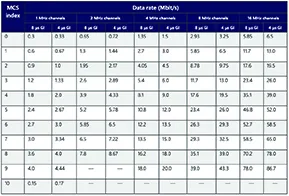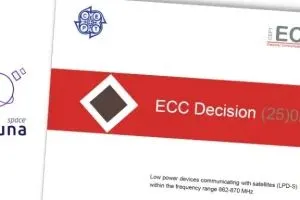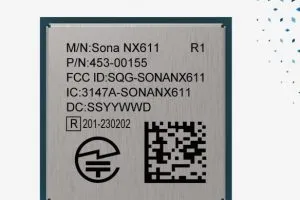Wi-Fi HaLow has been called an IoT enabler that overcomes the challenges faced by wireless low-power IoT devices, but what is it, and why does it matter?

HaLow phase two trials focused on smart city, agricultural and industrial buildings
Also known as IEEE 802.11ah, Wi-Fi HaLow began life in 2010 when the IEEE study group was formed. Formal integration into the 802.11 specification took place in 2020. At the Wireless Broadband Alliance (WBA) the Wi-Fi HaLow for IoT Applications working group has been evaluating the technology through use cases, aiming to assess its value in the low-power, long-range segment of the market against other non-licensed IoT technologies.
Earlier this year phase two field trials were completed in North America by WBA and its members (including key partners Methods2Business, Morse Micro and Newracom), alongside participants such as AT&T, Charter Communications, Nextcomm Systems and Qualcomm, which focused on larger-scale implementations and testing Wi-Fi HaLow in more challenging environments.
The phase two field trials, which are now a phase three extension into Europe and Asia-Pacific regions, proved the scalability and efficiency of Wi-Fi HaLow in challenging environments such as dense urban settings and large industrial complexes. These benefits have included extended ranges, improved material penetration capabilities, extended battery life, enhanced device density, a higher level of security, ease of installation and management, and elevated data throughput in IoT scenarios when compared with existing Wi-Fi standards. The use cases for these trials were smart homes, warehousing, smart farms, smart cities, smart office buildings, smart school campuses and smart industrial complexes.
Focus on the 2.4GHz spectrum
The 2.4 GHz industrial, scientific, medical band, used since the earliest days of traditional Wi-Fi, can experience heavy interference and congestion within homes and businesses. Bluetooth, Zigbee and Thread, as well as other proprietary radio protocols, all use this spectrum. Products such as baby monitors, audio headsets and speakers, automated light fixtures, heating, ventilation, air-conditioning sensors and controls, door locks and appliances all contend for the 2.4GHz airwaves. If any of these devices use older IEEE 802.11b or .11g modes of Wi-Fi operation, they drag down the total capacity for rest of the devices associated to that access point (AP) in the home. Wi-Fi HaLow offers IoT connectivity in the less-crowded sub-1GHz band. Wi-Fi HaLow and traditional Wi-Fi can operate without interference from each other and can be combined into the same AP or router.
The Wi-Fi HaLow difference
The original project authorisation request for IEEE 802.11ah defined an amendment to the 802.11 specification for an orthogonal frequency division multiplexing physical layer (PHY) operating in the license-exempt bands below 1GHz, for example, 863MHz-868.6MHz (Europe), 950MHz-958MHz (Japan), 314MHz-316MHz, 430MHz-434MHz, 470MHz-510MHz, and 779MHz-787MHz (China), 917MHz-923.5MHz (Korea) and 902MHz-928MHz (US), and enhancements to the IEEE 802.11 medium access control to support this PHY. It also specified mechanisms that would enable co-existence with other systems in the bands, including IEEE 802.15.4 and IEEE P802.15.4g.
The lower frequency allows for greater range and improved penetration through physical barriers such as walls and floors, making it particularly well-suited for IoT applications. Unlike traditional Wi-Fi frequencies (2.4GHz and 5GHz), Wi-Fi HaLow is optimised for low-power, long-range communication. It offers coverage up to 1km and can maintain connectivity even in challenging environments.
MAC layer enhancements
The media access control (MAC) layer in Wi-Fi HaLow includes several enhancements to support its low-power and high-density operation. These features help with the control of power and packet management to ensure the overall efficiency of the protocol.
Several features specify the wake-up behaviours of devices. The target wake time feature means device wake-up times can be scheduled to minimise power consumption. HaLow also supports non-traffic indication map STA (station) devices, which are sensors that do not rely on the traffic indication map beacons issued by access points to wake the device. They do not need to wake for the beacon, which lowers power consumption.
Channel management is another area where the MAC sees new enhancements. HaLow supports bi-directional transmission opportunity, which means the uplink and downlink channel access is combined, making better use of the available spectrum. A restricted access window is also implemented, which limits the uplink channel access to a small number of devices, which has the benefit of reducing collisions as devices transmit, something that is critical for maintaining efficient communication in dense IoT networks. Finally, the traffic information map, which is an element in the beacon frame, has been reduced in size, increasing the protocol efficiency and reducing power consumption when transmitting.
Keeping HaLow secure
The current standard dictates support for Wi-Fi Certified WPA3. This is the highest level of encryption, which satisfies enterprise and industrial Wi-Fi market segments. With HaLow’s high data throughput, there is much more headroom to support end-to-end security protocols to protect private data, such as transport layer security tunnelling to trusted platforms in the cloud. Support for fast over-the-air updates on IoT devices is an advantage Wi-Fi HaLow offers over competing RF IoT technologies.
Data throughput
Compared to traditional high-speed Wi-Fi generations, Wi-Fi HaLow trades some data throughput for the advantages of an extended range of connectivity and increased network reliability without sacrificing security and ease of use. However, it offers much higher throughput compared to other leading non-Wi-Fi technologies within IoT. Protocols based on the IEEE 802.15.4 standard, such as Thread and ZigBee, are limited to fixed PHY rates of 250kbps total throughput (data plus overhead) for the entire network.
Bluetooth and Bluetooth Low Energy offer modes that can send data at up to 2Mbps, though at short range (10s of metres) and at lower rates at longer distances. Wi-Fi HaLow can send data at over 80Mbps at short range. This high throughput means that the transmitter is on for a much shorter period than other radio technologies for a given packet size, lowering average power consumption.

Table: MCS index data throughput for Wi-Fi HaLow
Wi-Fi HaLow builds upon traditional Wi-Fi operation that dynamically optimises communications between the AP and each STA to maximise performance. It adjusts the modulation and coding scheme rates and channel bandwidth for each connection. Closer connections run faster and farther connections run slower. The single stream connection PHY rates range from 150kbps at very long distances using a 1MHz channel, to over 80Mbps at short distances using a 16MHz channel (see table).
The IoT evolution
Wi-Fi HaLow is a significant advancement in wireless technology, addressing the challenges posed by the growing IoT landscape.
The future of connectivity is not just about faster speeds or higher data throughput; it is about creating networks that can support the diverse and demanding needs of modern IoT applications.
Wi-Fi HaLow offers a new era of wireless connectivity that is both powerful and versatile.
Did you know?
Results from the trials are published in Wi-Fi HaLow for IoT: Field Trials Report, downloadable from the WBA. The report also details actionable insights for businesses, network planners and operators.



